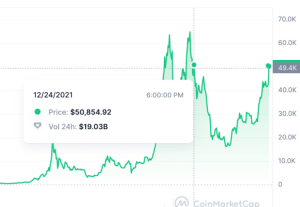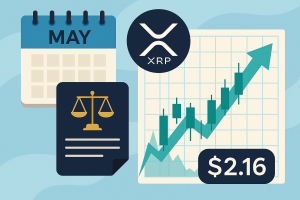- Following a proposal to reject a crypto mining ban, the EU considers disclosure and mitigation steps for the long-term sustainability of crypto assets.
- The EU’s executive arm urges member states to implement appropriate measures to reduce energy consumption by miners.
On Tuesday, October 18, the European Union (EU) issued a detailed document revealing its action steps towards implementing the European Green deal and the RePowerEU plan. According to Europe’s energy planners, the two programs aim to digitize the energy sector and save energy costs. In addition, industry analysts believe the projects target energy users in various sectors, including crypto miners.
The EU launched the RePowerEU plan in May following Russia’s unending war with Ukraine, drastically reducing energy supplies to European nations. The RePowerEU plan aims to reduce Europe’s dependence on Russian fossil fuels and fast-track a transition to a green environment. The European Commission explained that a vital part of the plan is to control the ICT sector’s energy consumption rate.
Green Deal: the light at the end of the crisis tunnel https://t.co/CAd5uorW9y
The faster we deploy the European Green Deal, the quicker we become crisis-proof. Brussels must resist the siren calls for inertia. pic.twitter.com/Z71niRzX8H— Social Europe (@socialeurope) October 17, 2022
It added that blockchain-related innovations are part of its area of focus and has included them under data centers. The commission’s staff working report remarked that European nations account for nearly 10 percent of global crypto mining activities. Ireland and Germany have the highest crypto-mining activities among European countries.
However, Sweden has recently experienced a surge in crypto-mining activities following China’s clampdown on all crypto-related activities. Hence, it is likely that the rate of crypto mining activities in Sweden will be close to that of Germany and Ireland soon. The report further states that it expects that the European securities and markets authority will draft a standard proposal for regulating the crypto sector globally.
A similar recommendation
The report also referenced a previous recommendation of the European blockchain observatory and forum (EUBOF) committee. The EUBOF committee suggested possible policies that could prevent the negative effect of crypto asset technologies on climate. In addition, the EUBOF report is an essential reference to a yet-to-be-released report on the environmental effect of digital assets. This report will be out in the next three years.
One of the first recommendations in the EUBOF report is to enact a policy to reduce what makes Bitcoin attractive and lower Bitcoin’s price. In addition, the staff working report noted that crypto investors must have a better understanding of crypto energy usage. Finally, like the EUBOF report, the ‘staff working’ report also suggested that the EU initiate a globally acceptable blockchain regulation.
A report by the European Commission to the Committee of regions, the European Parliament, Europe’s social and economic Committee, and the European Council states that there has been a 100 percent increase in crypto mining energy usage. The commission added that crypto asset market players must provide environmental disclosures under the proposed markets in crypto assets Markets in Crypto Assets (MiCA) regulation.
Reducing crypto miners’ energy consumption in winter
Meanwhile, the European Commission (an executive arm of the EU) has suggested that member nations implement necessary steps to reduce crypto miners’ energy consumption rate. The commission explained the move is essential as energy supplies from Russia continue to dwindle while there would be a tight energy situation during winter, as is usually the case.
The commission also suggested that member nations reduce crypto miners’ benefits, especially fiscal measures such as tax breaks. Norway is the first European nation to declare its intention to implement the commission’s suggestions publicly. Norwegian authorities are considering the removal of tax breaks for crypto miners. If Europe’s Green deal is successful, Ethereum and Cardano would have to forcibly comply and become ‘green’ networks.
Der Beitrag Ethereum and Cardano to be ‘green’ in European Green Deal for a sustainable environment – Important? erschien zuerst auf Crypto News Flash.





















